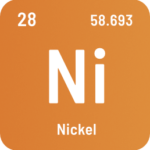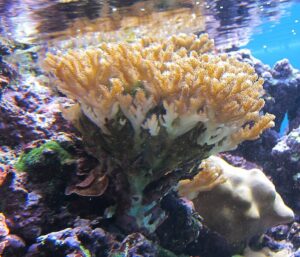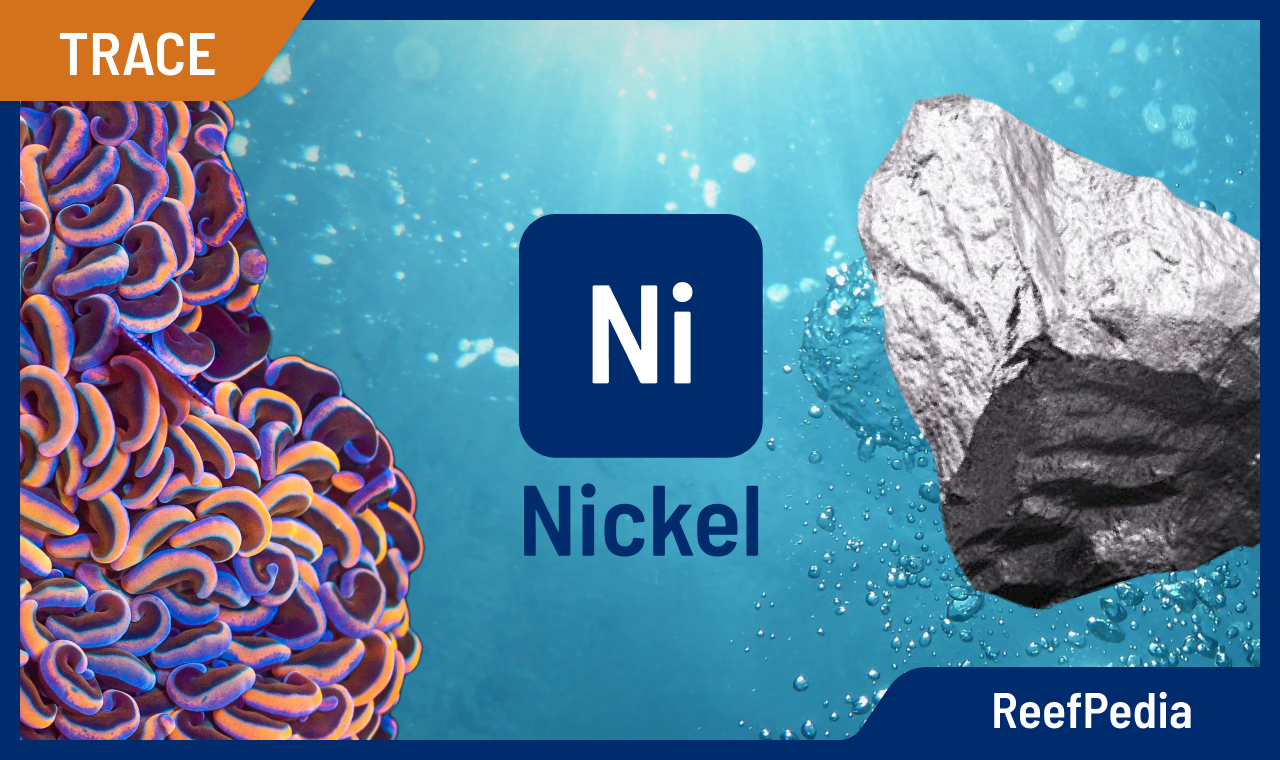Table of Contents

What is NICKEL (Ni)?
Nickel (Ni, Latin: niccolum) is an element belonging to the group of transition metals*. It is located in the tenth group of the periodic table. It is a white-silvery metal with a slight golden tint. In small quantities, it is found in the Earth’s crust, mainly in the form of native minerals such as garnierite and pentlandite. Nickel most commonly exists in a +II oxidation state, for example, nickel chloride (NiCl2). Compounds of nickel in a +III oxidation state are also known, such as nickel oxide (Ni2O3). In seawater, nickel is found in the form of nickel chloride (NiCl2) or nickel carbonate (NiCO3). Other compounds are insoluble and precipitate as solids.The significance of NICKEL (Ni) in seawater
Nickel is an important and essential trace element that influences various physiological processes. It is a component of many important chemical compounds involved in enzymatic processes, making it an essential trace element. Additionally, it affects other important aspects such as coloration and the protection of coral reefs against parasites. Its concentration in the aquatic environment should be maintained within the recommended range: 3-5 µg/l. Nickel belongs to a group of elements that are directly related to each other, including zinc (Zn), vanadium (V), copper (Cu), and molybdenum (Mo). You can read more about this in the article on dynamic elements in marine aquariums. Nickel is significant as a trace element in seawater, especially in areas such as:
The Role of Nickel in Biological Processes (Coral Skeleton Growth)
The primary building material of coral reefs is calcium carbonate, which contains traces of other elements. Coral skeletons are enriched with other elements that generally affect the quality of the skeleton. One example is the macroelement strontium (Sr), which is present in significant quantities in coral skeletons, and the trace element fluorine (F). You can find more information in the article “Factors Affecting Coral Skeleton Growth”. Despite the small amount of nickel in coral skeletons, scientific studies confirm that its presence in seawater improves coral skeleton growth. Research results are available for the impact of nickel on two coral species: Pocillopora damicornis and Acropora muricata. Increasing the concentration of nickel in the water stimulates the calcification process. This may be related to the activity of urease, an enzyme that contains nickel. This enzyme catalyzes the hydrolysis of urea, releasing inorganic carbon (likely stimulating the calcification process) and ammonia. Such a relationship is only possible under optimal temperature conditions, as higher temperatures lead to the denaturation (destruction) of the urease enzyme. The presence of nickel also helps corals absorb nutrients. It is known that the formation of basal disks is problematic if the nickel content is too low.The Role of Nickel – Coral Coloration
Nickel is not an element that determines specific coloration in corals. However, it’s important to note that adjusting the amount of nickel in a tank can enhance red and turquoise colors in corals. Moreover, achieving contrasts without the presence of nickel can be challenging.The Role of Nickel – Biological Processes (Enzymatic Processes)
Nickel plays a significant biological role as a component or activator of enzymes. It is involved in various enzymatic reactions in cell physiology and metabolic processes, as well as in the formation of biofilms. Scientific research has shown that nickel is essential for the utilization of urea (a nitrogen source) by phytoplankton. Protein synthesis can be disrupted when nickel content is low.The Role of Nickel – Protection Against Parasites
High nickel content in a tank can expose animals to parasite attacks and have a inhibitory effect on the development of bacteria and algae.Hazards Associated with Nickel (Ni) Deficiency and Excess in Seawater:
Low nickel concentrations can have a negative impact on enzymatic processes that involve this element. Insufficient levels of nickel can hinder nutrient absorption by corals and inhibit their growth. High nickel concentrations can cause tissue bleaching and partial shedding. Rapidly growing corals are susceptible to tissue dissolution at the base disc.How to Protect Your Aquarium?
Regularly monitor the nickel content and maintain it at the proper level. It is recommended to keep nickel at a level of 3-5 μg/L, with the optimal recommended value being 4 μg/L. Maintaining the right level of nickel in seawater ensures the health and beautiful coloration of marine animals. The most accurate and reliable method for nickel determination is ICP-OES analysis. Inductively Coupled Plasma Optical Emission Spectrometry (ICP-OES) is the most precise analytical method for determining the elemental composition of seawater. Indicators of Improper Nickel (Ni) Levels in a Marine Aquarium: A very good indicator of the proper nickel level in seawater is Acropora millepora. If this coral does not form a basal disk, it is advisable to check the nickel content.Deficiency:
- Difficulty in absorbing nutrients
- Inhibition of skeleton growth
- Disruption of enzymatic processes
Excess:
- Tissue bleaching in corals
- Tissue detachment
- Inhibition of skeleton growth
- Increased susceptibility to parasites
Recommendations:
To ensure the appropriate level of nickel in your aquarium, you should regularly test it and maintain it at the proper level. If the nickel level exceeds 5 µg/L, it is considered to exceed the recommended content in a reef tank. The most common reasons for exceeding the recommended nickel level include:- Contaminated salt;
- Rusting stainless steel elements;
- Feeding, such as Artemia;
- Elements made of high-density polyethylene;
- Excessive doses of administered fluids.
About author

Magdalena Metzler
Privately, I am a mother and a lover of nature and sport. My main interest is quantum chemistry, which hides a whole lot of unsolved mysteries and connections, which is extremely exciting from a scientific point of view.
In my scientific career, I have conducted international projects focused on innovative solutions for many branches of business, e.g. automotive, construction, and now, of course, marine aquaristics.
Working at Reef Factory gave me a passion for marine aquaristics, which I can develop every day, building a chemistry department and creating products that will help aquarists take care of tanks and ensure the highest safety of animals. One of the most exciting memories of working at Reef Factory is the commissioning of the ICP-OES spectrometer, which analyzes the elemental composition of seawater. The method of analysis in ICP is based on an analytical technique, which is a combination of my passion for quantum chemistry and marine aquaristics.
I hope you find my articles on ReefPedia interesting and helpful! Happy reading :))

